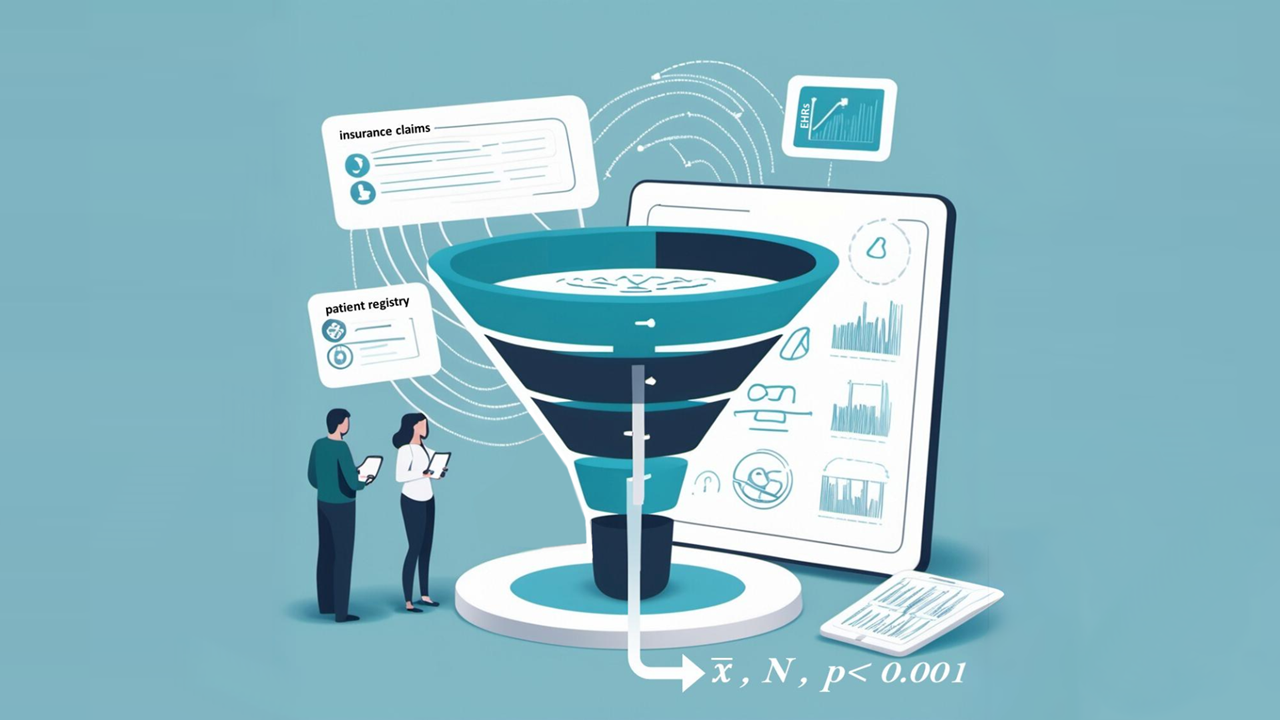What’s the Difference Between Real World Data and Real World Evidence?
While often used interchangeably, there is clear distinction between the terms Real World Data (RWD) and Real World Evidence (RWE).
RWD is all about the raw information we gather from everyday healthcare settings. This data comes from various sources, like electronic health records (EHRs), patient registries, insurance claims, and even feedback from patients themselves. Think of it as the backdrop against which healthcare happens.
On the flip side, RWE takes that data and turns it into something more meaningful. RWE is what we get when we analyse and interpret RWD to understand how well health interventions work outside of controlled clinical trials. It helps answer questions about the effectiveness, safety, and overall value of healthcare technologies in real-life situations.
Why Is This Important?
Understanding the distinction between RWD and RWE is vital for anyone involved in health technology, especially big pharma and biotech looking to launch a new product and even early-stage MedTech ventures. While RWD provides a wealth of information, it’s the transformation into RWE that influences decisions on market access, regulatory approvals, and even treatment guidelines.
Real World Evidence in Health Technology Assessment
RWD — information collected from day-to-day healthcare practices—plays a key role in supporting health technology assessments (HTAs), especially when it comes to gaining market authorisation and securing subsidies. The recent HTA Policy and Methods Review – Optimising the availability and use of real world data and real world evidence to support health technology assessment report by the Australian Government (July 2024) sheds light on how MedTech sponsors can tap into RWD to boost their market strategies.
How RWE Fits into HTA
RWE gives us a fuller picture of how health technologies perform in everyday settings, which can differ significantly from the outcomes seen in traditional clinical trials. While randomised controlled trials (RCTs) are crucial for establishing efficacy, they aren’t always practical or ethical, particularly for rare conditions. The recent report highlights RWE’s growing importance in HTA processes, especially for new medicines and vaccines looking to join the Pharmaceutical Benefits Scheme (PBS) and the Medicare Benefits Schedule (MBS). This is a golden opportunity for early-stage MedTech ventures to position their products effectively.
Key Scenarios for Using RWD
The report outlines three scenarios where RWD can enhance traditional evidence in HTA:
- Sufficient Evidence: When RCT data is robust enough to support market claims.
- Insufficient Evidence: When RCT evidence falls short, and RWD becomes necessary.
- No Evidence: In cases where RCTs aren’t feasible, RWD is essential to show a product’s value.
Understanding these scenarios enables established MedTech companies launching new products and startups to focus their evidence-generation efforts where they’ll have the most impact.
Overcoming Challenges with RWD
Despite the rich pool of available data, many MedTech firms face challenges with RWD accessibility and usage in Australia. The report points to a lack of clear pathways for data access as a significant barrier. For both startups and established companies, forming strategic partnerships and engaging with relevant stakeholders is crucial to navigating these hurdles. Collaborating with data custodians and regulatory bodies will help ensure they’re making the most of RWD in their submissions.
Four Principles for Maximising RWD Value
To fully unlock the potential of RWD and RWE, the Australian Government’s HTA Policy and Methods Review report recommends four key principles that can guide MedTech companies, whether they’re just starting out or are well-established:
- Partnerships: Create advisory groups that bring together multiple stakeholders to design effective systems for optimising RWD access.
- Trust: Foster confidence among stakeholders about using cross-jurisdictional RWD while ensuring privacy and data security.
- Data Infrastructure: Build a strong data governance framework that supports RWE generation while being adaptable to HTA needs.
- Methods: Use best practices for data standardisation and analytics to enhance RWD reliability.
Next Steps for MedTech Companies
The report also outlines actionable steps that MedTech companies can take to refine their RWD strategies. In the short term, focusing on streamlining ethics and governance processes for data access is crucial to accelerating RWE development.
By collaborating effectively and prioritising RWD integration into their evidence strategies, startups and established companies launching new products can better align with HTA requirements, ultimately supporting their goals for regulatory and market access.
Conclusion
The recent Australian government report on optimising RWD and RWE for HTA is a valuable resource for MedTech companies navigating the complexities of health technology evaluation. By leveraging the insights from this report, organisations can strengthen their evidence strategies, enhance their market access approaches, and ultimately improve health outcomes for patients.

